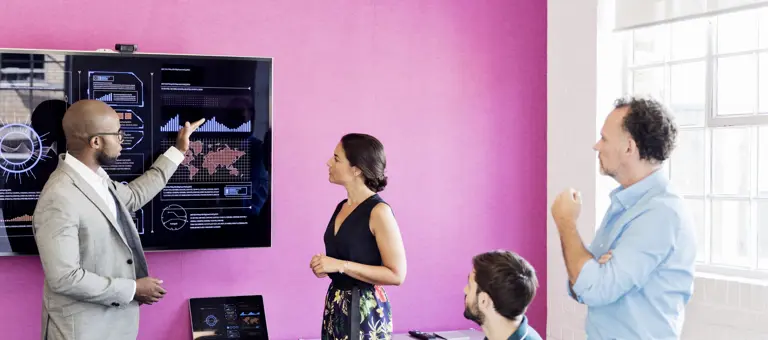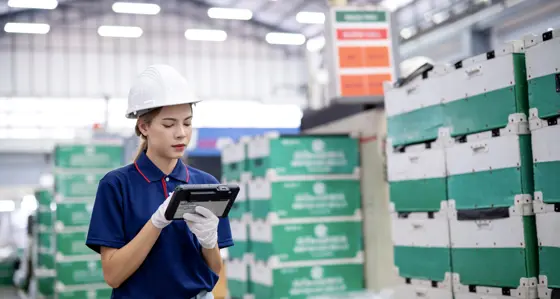
Don’t dismiss dialogue: why competitive dialogue should be explored for your next complex technology procurement and how to get it right
6 min read 11 March 2024
As public sector organisations increasingly put complex technology solutions at the centre of transformational change, the need to procure the right solution is critical. A key part of this is selecting the right procurement procedure.
In our experience, competitive dialogue provides an effective route to procure solutions to meet complex and bespoke requirements.
What is competitive dialogue?
Competitive dialogue is a procurement procedure where a contracting authority can allow solutions to the procurement to evolve through the procurement process. When used well, it allows engagement with bidders to test solutions, drive bidders’ understanding of the requirements, explore areas of concern or difficulty, and facilitate an open, two-way dialogue.
The benefits to departments and programmes of the approach should easily offset the perceived additional costs and time taken to run the process.
Why select competitive dialogue for complex technology procurements?
Working with bidders throughout the procurement process is valuable for complex technology procurements, where cutting-edge innovation and capability will reside in the market rather than the public sector.
In a fast-moving market, SROs and approvers are also asking for validation of potential solutions to ensure deliverability of solutions, capability of bidders and value-for-money. Competitive dialogue enables this, presenting the opportunity to test outline solutions using interactive validation exercises such as proof of concepts or collaboration assessments.
Whilst procurement teams traditionally use the Competitive Procedure with Negotiation for complex procurements, or even attempt to procure off frameworks to reduce end-to-end timescales, we believe procurement teams should give competitive dialogue more time in the procedure options assessment.
Getting it right
When using competitive dialogue, our experience tells us there are five key considerations to factor in:
- Plan for momentum – time box your procurement and strictly control the drumbeat. One of the biggest criticisms of dialogue is delays and the overall time it takes. With robust and agile project management the risk of delays can be mitigated, and we have seen complex, multi £m procurements benefit from even a 6-week dialogue.
- Ensure buy-in - senior stakeholders and your dialogue team must be bought-in to using this procedure. They need to understand the journey they will undertake and be adequately prepared. Dialogue is most effective when the right experts from both sides are in the room, engaging in an open discussion. Senior leaders must free up the right people from their teams to drive success, and commercial teams should provide commercial support before and during dialogue.
- Embed feedback throughout the process – open, honest two-way feedback is critical to making dialogue a success. This means contracting authorities must create the time and forum for constructive feedback during the dialogue period by all parties – including on the requirements, solutions, and deliverability. In addition, early feedback on the suitability of competitive dialogue and the requirement should be tested with the market during pre-market feedback – after all it is a large investment for bidders.
- Design the process with the right amount of flexibility – it is crucial that a dialogue is scoped end to end from the outset, ensuring the process is compliant and time-bound. Make sure you work with technical counterparts to understand the key areas for focus during dialogue. This allows you to build in the optimal amount of flexibility around key elements such as bidder solutions, risk and financial models. Too many areas of focus increases the risk of delay.
- Hit the ground running – after selecting your preferred supplier, you will have already had a period of open and frank discussions about requirements, the solution and its implementation, driving the start of a positive client relationship. This creates an opportunity to kick off the project faster and more effectively than other procedures.
If well managed the benefits to departments and programmes of the approach should easily offset the perceived additional costs and time taken to run a competitive dialogue. As with any procurement process requirements should drive the procurement route options assessment. Where there is high uncertainty over requirements competitive dialogue is a recommended procurement procedure by the Cabinet Office.
In summary, competitive dialogue isn't just a procurement process; it's a strategic approach to engaging with bidders, validating solutions, and enabling value-for-money. If you are ready to explore this procurement process reach out to our experienced team today to learn more about how we can help you shape a competitive dialogue which could transform your next technology procurement.
About the authors
Abi Walbridge specialises in major and complex procurements having worked on some of the biggest across Government. Abi is experienced in designing and delivering both the competitive negotiated procedure and competitive dialogue end to end. She is also the Baringa lead for the incoming Procurement Act.
Harry Allport specialises in delivering complex commercial programmes within the public sector, having delivered multiple complex, technology procurements through different procedures in the Health and Central Government sectors.
Otto Callenfels leads Baringa’s Supply Chain and Procurement work in Public Sector Health and has overseen many high profile procurements. He specialises in Digital and Technology Commercial work, helping the Government work with Industry to drive innovation and best in class solutions. He is passionate about the Public Sector getting value for money, whilst ensuring its strategic objectives are front and centre in building a long-lasting supplier ecosystem.
Our Experts

Related Insights

Laying the foundation: Preparing government procurement for AI integration
What foundational steps must government agencies take today to ensure AI can truly transform procurement tomorrow?
Read more
UK Spending review 2025 – impact and challenges for the public sector
Explore the 2025 UK Spending Review’s impact on public services, tech investment, and the challenges facing government departments.
Read more
The National Data Library: building the foundations of the UK’s data infrastructure
The ambition of the National Data Library is to lay the foundations of the UK’s future data infrastructure. To do this, the NDL needs to consolidate the current fragmented ecosystems and to put forward a clear case of its benefits for the UK economy and society.
Read more
Learning from crisis: How to embed mission-led government
Now that the budget has set the ‘what’ of government, we encourage focus to shift to the ‘how’.
Read moreRelated Client Stories

Improving data preparation and collection for better State Government decisions
How do you collect and translate inconsistent data from disparate systems to better inform and evaluate the impact of spend policies?
Read more
Putting a social outcomes lens over an IT RFP for an Australian government agency
How do you change how vendors see their systems, so responses align with agency outcomes and non-functional requirements?
Read more
Ensuring climate compliance and lasting impact for government agencies
How do government agencies navigate climate regulations today and future-proof for tomorrow?
Read more
Delivering NHS England’s most complex non-clinical technology procurement ever
Supporting NHS England build the data backbone that will unlock better health services and care for people in England for years to come.
Read moreIs digital and AI delivering what your business needs?
Digital and AI can solve your toughest challenges and elevate your business performance. But success isn’t always straightforward. Where can you unlock opportunity? And what does it take to set the foundation for lasting success?